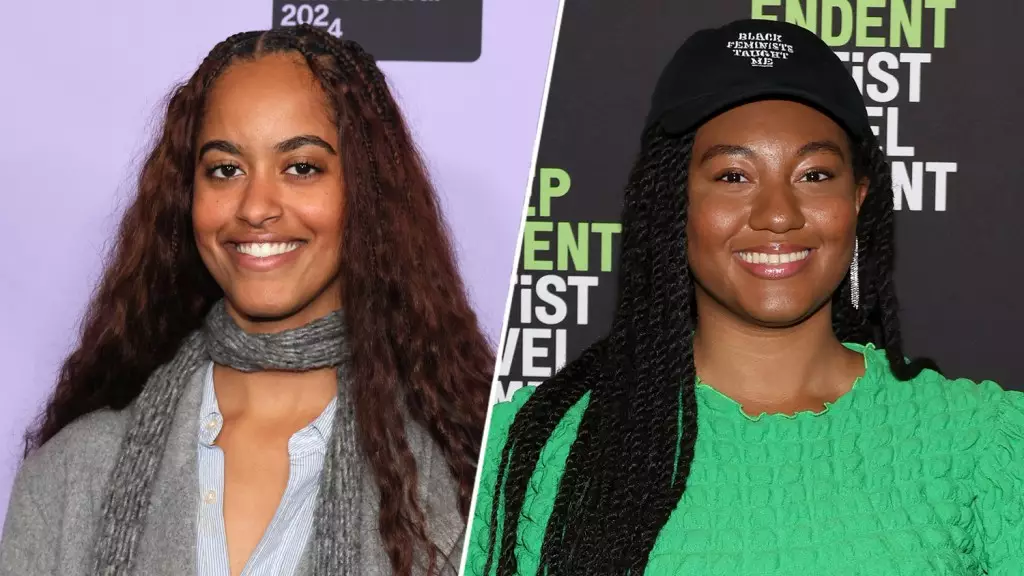In the creative realm, inspiration walks a fine line between homage and appropriation. This tension has flared up spectacularly with the recent showcase of Malia Obama’s short film, “The Heart,” at the 2024 Sundance Film Festival. Every debut invites scrutiny, but what transpires when shockwaves ripple through the artistic community over perceived similarities in creative vision? The recent allegations made by filmmaker Natalie Jasmine Harris against Obama have shone a spotlight on a troubling dynamic: the accessibility of independent artists versus the familiar, yet oftentimes stale, narratives presented by those within powerful familial legacies.
Harris, who competed with her short film “Grace” in the same festival circuit, pointed to unmistakable parallels between specific scenes in her work and a Nike advertisement featuring WNBA star A’ja Wilson. It’s not merely the act of creating—a practice that inherently builds on what came before—but the manner in which large corporations snatch at the fruits of independent creators while offering little in return. In the era of glossy commercialism, originality often falls prey to brand machinery, making it increasingly difficult for fresh narratives to gain traction against the clamor of established figures.
The Reality of Unequal Power Dynamics
Harris articulated her dismay eloquently in a Business Insider essay, revealing the profound emotional turmoil that accompanies the dissolution of one’s hard work into a hollow echo. Her grievances resonate well within the artistic community, which has often found itself beleaguered by large brands that routinely capitalize on the visions of emerging artists. For Harris, the pain doesn’t simply stem from perceived theft but from a systemic neglect of an entire generation of creators trying desperately to forge their own paths.
When talented filmmakers like Harris are not just overlooked but actively overshadowed by someone with name recognition, it sets a dangerous precedent. The art world is fundamentally about diverse voices contributing to a richer cultural tapestry. Yet, the reality remains that those voices often go unheard or are drowned out by the narratives favored by corporate giants. Was Harris’s experience merely a freak occurrence or a potent reminder that the avenues traditionally trodden by cinematic icons are increasingly inaccessible?
The discussion surrounding artistic originality versus recognition is pivotal. As Harris shared sentiments of disappointment both for herself and her team, it brings forth an uncomfortable truth: large corporations and established creators need to cultivate an environment in which emerging artists can thrive rather than fracture under the weight of prevailing hegemony.
The Aftermath: An Artist’s Call for Accountability
Harris’s inability to receive acknowledgment from either Obama or Nike only deepens the narrative that the industry often neglects its own. When large players can sidestep acknowledgment or accountability, it sends a chilling message to independent creators: your work is disposable, your contributions inconsequential. This adds layers of complexity to the discourse about ownership and intellectual property in creative industries.
As Harris beautifully articulates, the cinematic tools should not be approximated merely because they exist within a common lexicon of expression. Rather, they should be delineated with respect for those who birthed them—an aspiration that feels increasingly alien in today’s climate. The progression from initial shock to lingering frustration that Harris describes is emblematic of a broader struggle many artists face. It encapsulates their quest for validation and support in a world that tends to revere the well-known over the original and authentic.
In a post-Obama family world where the former first daughter’s creative endeavors are met with both enthusiasm and skepticism, one cannot help but ponder the ramifications. Will Malia Obama wrestle with the burden of her privilege in a manner that allows her to rise as an innovator rather than as another cog in the machine? Harris’s discontent serves as a poignant reminder that creativity thrives best in an ecosystem that nurtures rather than diminishes. Artists must be empowered—financially, culturally, and socially—to create rich narratives that disrupt the status quo, not mimic it.
Ultimately, as the dust settles after the Sundance festival, will the conversations sparked by Harris catalyze a shift toward greater accountability within an industry long overdue for transformation? For a thriving art community, we must advocate fiercely for integrity and originality, demanding that those at the top acknowledge and elevate the hard-won efforts of those still struggling to find their voices.

Leave a Reply